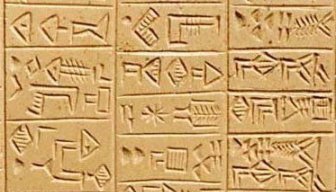
The advent of writing marks a pivotal moment in human history, allowing for the recording and preservation of knowledge. Around 3200 BCE, remarkable writing systems emerged independently in Mesopotamia, Egypt, and the Indus Valley, revolutionizing communication and laying the foundation for written language.

Mesopotamia: The Birth of Cuneiform
In the fertile lands of Mesopotamia, present-day Iraq, the Sumerians developed one of the earliest known writing systems called cuneiform. Cuneiform utilized wedge-shaped impressions on clay tablets, enabling the recording of economic transactions, administrative records, literature, and religious texts. It became a versatile script used by various civilizations in the region.
Egypt: The Majesty of Hieroglyphics
In ancient Egypt, hieroglyphics emerged as a sophisticated writing system characterized by pictorial symbols representing objects, ideas, and sounds. Hieroglyphics adorned temple walls, monumental structures, and papyrus scrolls, serving as a means of recording history, religious texts, and royal decrees. The decipherment of hieroglyphics unlocked a wealth of knowledge about ancient Egyptian civilization.
Indus Valley: The Enigma of the Indus Script
The Indus Valley Civilization, located in present-day Pakistan and northwest India, developed a script known as the Indus Script. Although its full decipherment remains elusive, the Indus Script, characterized by distinct symbols inscribed on seals and pottery, suggests a system of writing used for administrative and commercial purposes.
Impact and Legacy
The emergence of writing systems in these regions had profound implications for the development of complex societies. Writing facilitated the centralization of political power, the recording of laws and regulations, the preservation of cultural and religious beliefs, and the dissemination of knowledge across generations. These early scripts laid the foundation for future writing systems and paved the way for the advancement of human civilization.
Around 3200 BCE, the birth of writing systems in Mesopotamia, Egypt, and the Indus Valley ushered in a new era of human communication and intellectual progress. Cuneiform, hieroglyphics, and the Indus Script were groundbreaking achievements, enabling the expression, preservation, and transmission of ideas and information. These early writing systems form a crucial part of our collective heritage, embodying the human desire to communicate, understand, and shape the world through the power of the written word.
As an Amazon Associate we earn from qualifying purchases through some links in our articles.




